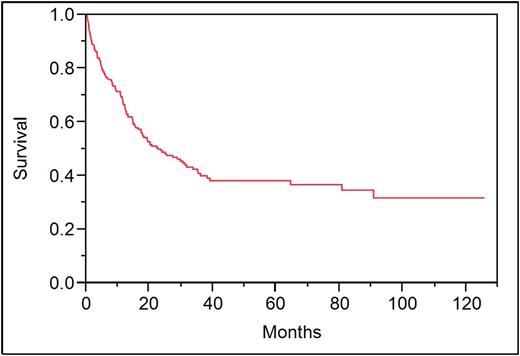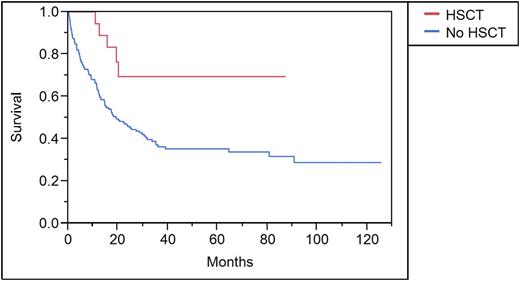Abstract
Introduction
Blastic plasmacytoid dendritic cell neoplasm (BPDCN) is an extremely rare hematologic malignancy that was grouped with myeloid malignancies in the 2008 WHO classification. The current available literature is limited to small case series and single-institution experiences. This population study using the Surveillance, Epidemiology, and End Results Program (SEER) and the National Cancer Database (NCDB) is the largest to explore epidemiologic and outcome data in BPDCN. SEER collects cancer incidence and survival data from cancer registries covering approximately 26% of the US population. NCDB is a nationwide, facility-based, comprehensive, clinical-surveillance resource for oncology data coming from more than 1500 Commission of Cancer (CoC)-accredited programs.
Methods
Using data from the SEER and NCDB registries, this study respectively identified 379 (years 2000-2013) and 216 (years 2004-2012) adult patients over the age of 20 diagnosed with BPDCN (ICDO-3 coding 9727). We used the SEER registry to estimate incidence rates, ratios and trends and the NCDB registry to study clinical characteristics, survival and outcomes. The JMP statistical software and the SEER*STAT 8.3.2 were used to conduct statistical analysis. We analyzed survival using the Kaplan-Meier method and used log-rank tests to compare survival distributions. The prognostic effect of pertinent clinical variables was studied using multivariate Cox proportional hazards models. All tests of statistical significance were two-sided and P < 0.05 was considered significant.
Results
The median age at diagnosis for BPDCN was 52 years (20-93). The incidence of BPDCN was found to be 0.45/1,000,000 age-adjusted to the 2000 US standard population with similar trends over the years. No racial disparities were identified. The male:female ratio was 2 (P<0.00001). The bone marrow was the most common primary site of involvement (42%) followed by the skin (20%) and the heart, mediastinum and pleura (13%). The median overall survival for the entire cohort was found to be 23 months (95% CI; 17-34). Survival rates at 1 year, 2 years and 5 years were found to be 66%, 49% and 38% respectively. 20 patients (10%) underwent a hematopoietic stem cell transplantation (HSCT) as part of their initial therapy and the median overall survival for these patients was not reached compared to a median survival of 19 months for patients who did not undergo upfront HSCT (95% CI; 15-30, P=0.006). A univariate and multivariate analysis was performed including age, race, sex, HSCT, insurance status, income, treatment facility (academic versus non-academic) and disease primary site. Young age and HSCT were predictors of better outcomes. 60 years and older was found to be the age cut-off associated with significantly inferior survival based on receiver operating characteristic (ROC) curve analysis.
Conclusion
BPDCN is a rare hematologic malignancy associated with a poor median survival of less than two years. Males are twice more likely to be affected than females. The bone marrow is the primary site of involvement in most cases. Younger age (<60 years) and HSCT were predictors of significantly better outcomes.
Kaplan-Meier survival curve for the entire cohort
Kaplan-Meier survival curves in patients Age <60 versus > 60
Kaplan-Meier survival curves in patients who underwent HSCT versus those who did not
Al-Kali:Celgene: Research Funding; Onconova Therapeutics, Inc.: Research Funding.
Author notes
Asterisk with author names denotes non-ASH members.




This feature is available to Subscribers Only
Sign In or Create an Account Close Modal